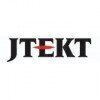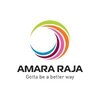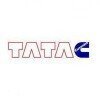
i
Schaeffler
India
Filter interviews by
Schaeffler India Design and Development Executive Interview Questions and Answers
6 Interview questions
Gearbox selection involves considering factors such as torque requirements, speed ratios, efficiency, and size constraints.
Determine the torque requirements of the application
Calculate the speed ratios needed for the gearbox
Consider the efficiency of different gearbox types
Take into account size constraints and available space for installation
Choose a gearbox type that best meets the requirements, such as spur gea...
Types of load taken by bearing include radial load, axial load, and combined load.
Radial load: Load acting perpendicular to the axis of rotation, like the weight of a rotating shaft.
Axial load: Load acting parallel to the axis of rotation, like the thrust on a rotating shaft.
Combined load: Combination of radial and axial loads, common in many applications.
Other types of loads include moment load and dynamic load.
The best gear pair depends on the specific application and requirements, typically selected based on gear ratio, torque, speed, and efficiency.
Consider the required gear ratio for the application
Evaluate the torque and speed requirements
Take into account the efficiency of the gear pair
Choose the gear pair that best meets the application's needs
Examples: spur gears for high speed applications, helical gears for hig...
Optimizing existing design can improve functionality, efficiency, and user experience.
Optimizing existing design can lead to cost savings by reducing the need for a complete redesign.
It can improve user experience by addressing any usability issues or inefficiencies in the current design.
Optimizing design can also enhance functionality and performance, making the product more competitive in the market.
Examples inc...
Hardness and toughness are important properties in materials science for determining resistance to deformation and ability to absorb energy.
Hardness refers to a material's ability to resist deformation, scratching, or indentation.
Toughness is the ability of a material to absorb energy and plastically deform without fracturing.
Hardness is often measured using the Mohs scale for minerals or the Rockwell scale for me...
Various materials used in mechanical industry include metals, plastics, ceramics, and composites.
Metals: steel, aluminum, copper, titanium
Plastics: nylon, PVC, polycarbonate
Ceramics: alumina, zirconia
Composites: carbon fiber, fiberglass
Schaeffler India Design and Development Executive Interview Experiences
1 interview found
Design and Development Executive Interview Questions & Answers
posted on 21 Aug 2024
(7 Questions)
- Q1. Types of Material used in mechanical industry
- Ans.
Various materials used in mechanical industry include metals, plastics, ceramics, and composites.
Metals: steel, aluminum, copper, titanium
Plastics: nylon, PVC, polycarbonate
Ceramics: alumina, zirconia
Composites: carbon fiber, fiberglass
- Q2. Types of load taken by bearing
- Ans.
Types of load taken by bearing include radial load, axial load, and combined load.
Radial load: Load acting perpendicular to the axis of rotation, like the weight of a rotating shaft.
Axial load: Load acting parallel to the axis of rotation, like the thrust on a rotating shaft.
Combined load: Combination of radial and axial loads, common in many applications.
Other types of loads include moment load and dynamic load.
- Q3. What is important of hardness & toughness?
- Ans.
Hardness and toughness are important properties in materials science for determining resistance to deformation and ability to absorb energy.
Hardness refers to a material's ability to resist deformation, scratching, or indentation.
Toughness is the ability of a material to absorb energy and plastically deform without fracturing.
Hardness is often measured using the Mohs scale for minerals or the Rockwell scale for metals.
...
- Q4. Why we can optimise existing design?
- Ans.
Optimizing existing design can improve functionality, efficiency, and user experience.
Optimizing existing design can lead to cost savings by reducing the need for a complete redesign.
It can improve user experience by addressing any usability issues or inefficiencies in the current design.
Optimizing design can also enhance functionality and performance, making the product more competitive in the market.
Examples include ...
- Q5. How can we select gearbox?
- Ans.
Gearbox selection involves considering factors such as torque requirements, speed ratios, efficiency, and size constraints.
Determine the torque requirements of the application
Calculate the speed ratios needed for the gearbox
Consider the efficiency of different gearbox types
Take into account size constraints and available space for installation
Choose a gearbox type that best meets the requirements, such as spur gear, he...
- Q6. Which gear pair is best & how can we select it?
- Ans.
The best gear pair depends on the specific application and requirements, typically selected based on gear ratio, torque, speed, and efficiency.
Consider the required gear ratio for the application
Evaluate the torque and speed requirements
Take into account the efficiency of the gear pair
Choose the gear pair that best meets the application's needs
Examples: spur gears for high speed applications, helical gears for high tor...
- Q7. Types of load acting on electric motor?
- Ans.
Types of load acting on electric motor include constant torque load, variable torque load, and constant power load.
Constant torque load: Load where torque required is constant, like conveyor belts.
Variable torque load: Load where torque required varies, like fans and pumps.
Constant power load: Load where power required is constant, like elevators.
Skills evaluated in this interview
Top trending discussions






Interview questions from similar companies

Interview Questionnaire
5 Questions
- Q1. What are your strengths, weaknesses..?
- Ans.
My strengths include leadership, problem-solving, and communication. My weaknesses are time management and public speaking.
Strengths: Leadership - I have experience leading teams and delegating tasks. Problem-solving - I am able to think critically and find solutions to complex problems. Communication - I am able to effectively communicate with team members and clients.
Weaknesses: Time management - I sometimes struggle...
- Q2. What irritates you most..?
- Ans.
Inefficiency and lack of communication irritate me the most.
Inefficiency in completing tasks
Lack of communication within the team
Not being able to meet deadlines due to lack of planning
Unnecessary delays in decision-making
Micromanagement
Lack of clarity in instructions
- Q3. What do you do in such situations..?
- Ans.
I assess the situation, gather information, and make a decision based on company policies and procedures.
Assess the situation and determine the severity of the issue
Gather information from all parties involved
Refer to company policies and procedures for guidance
Make a decision based on the information gathered and company guidelines
Communicate the decision to all parties involved
- Q4. Are you a leader or a follower...?
- Ans.
I am a leader who can also follow when necessary.
I believe in leading by example and inspiring others to follow.
I am comfortable taking charge and making decisions, but also value input from others.
I am adaptable and can switch between leading and following depending on the situation.
For example, in a team project, I would take the lead in organizing and delegating tasks, but also listen to and incorporate ideas from t...
- Q5. Which one is good
Interview Preparation Tips
Experience: I have a CGPA 7.38.
Round: Test
Experience: There was an online objective test
Tips: Previous year IIT Gate book is the best thing to prepare for the technical test for any company. I started doing it in October only.
Duration: 80 min minutes
Round: Interview
Experience: There were two rounds of interview ; 30min for Tech and 10 min HR.
Tips: If you are in ED they will test your basic design skills. They showed a CAD drawing and asking the meaning of symbols, then they asked questions related to general designs available in our surroundings like why is that sewage hole round on the ground why not square or others. If you are in Mechanical, they will ask u core Mech subjects. So please first prepare very well subjects related to your respective interns. A whole interview can be drawn on that. In my case it was IC engine so I answered all the questions related to it and that didn't allow them to ask in any other topic.
Round: Interview
Experience: It was gen. All HR rounds just want to test how much positive you are in life, whether you will leave the company soon.
Tips: Be prepared with answers beforehand. The answers to all the above questions should be "depends on the
situation" and describe them in which situation u will choose which one. PS: if it’s a panel where HR is also there, they will try to excite you by asking gen questions like which team you support in IPL, do u have any gf etc. to make you lite, then again shoot you with some questions. Please don’t get deviated by those.
Skill Tips: Mock tests, Aimcats, Gate book. For GDs, we organised them in our wing. It was very helpful.
Kindly do it often in your wing and among your batch mates too. Same goes for interview. There
are lots of general interview questions available on FTP server, prepare for them well and have
mock interviews. "Alumni interviews" were very helpful, please attend that. Randstad sessions were an absolutely waste of money and time. I was mainly selected due to my internship with Bosch. Prepare all subjects related to your intern. It will be the game changer.
College Name: IIT Madras

Interview Preparation Tips
Experience: CGPA cut-off: 7. The test had two parts. The level of the questions in the first part was very easy and do not require GRE or CAT skills. It had questions on verbal ability (readinc comprehension and vocabulary) and Math (time- work problems, arithmetic, percentages etc). The second part had questions related to Mechanical Engineering. It was slightly tough having a wide range of questions from Kinematics, design of machine elements, fluids , and thermodynamics .However, one can easily crack the test.
Tips: Don’t leave the questions unaswered as there is no negative marking.
Round: Interview
Experience: Around 60 students were shortlisted for the interview .There was only one round of interview which had both HR and technical questions. The interviewers were very friendly. The interview went on for approximately forty minutes. They started by asking me about my hometown, family, interests etc. Few question were: “Tell me about yourself”, “Describe your hometown”, “Why do u want to join Bosch and what do you know about it”, “Why won’t you go for MS or PhD”. The rest of the interview process was about the projects and internships and a few basic concepts of Mechanical Engineering. Each student was asked questions from different topics depending on the projects he was involved in. Basic questions I was asked : “What is casting”, “What is forming”, “How is a gear manufactured”, “What is the profile oF the gears used and why”. Apart from these, afew things about CRDi technology were asked.
Tips: Being a part of technology events in the hall will help a lot during the interview process. Google about ABS, CRDi, bearings, gears etc and study the “Thermodynamic cycles” from any thermodynamics book before the interview. Be confident.Never create an impression that you are a research orientated guy and will be going for MS or PhD. Do not panic. Do not try to bluff - they are experienced people and will find it out. Prepare very thoroughly about the projects. Learn about recent developments in the automobile sector (any technology developed by Bosch). Always smile .
General Tips: Having a CGPA>8 will enhance your chances. In mechanical, almost all the students who got selected had a CGPA of around 8.5. Mine was 8.4. However, Class X and Class XII percentages do not matter.
Internships in automobile industries definitely help. My sophomore intern was at Tata Motors Ltd. which caught the interviewer’s attention. The interview was guided by the project done by me at Tata Motors. Having a few academic projects also helps. Generally, they ask about projects mentioned in the CV. So, it’s better to be prepared about any project you may have done. Knowledge of the auto-sector is a must. Learn about recent developments in this sector.
College Name: IIT KHARAGPUR

Interview Questionnaire
5 Questions
- Q1. My interests, apart from acads
- Q2. Where I see myself in 5 years...?
- Ans.
In 5 years, I see myself as a successful Assistant Manager, having gained valuable experience and contributing to the growth of the company.
Continuing to develop my leadership skills
Taking on more responsibilities and challenges
Mentoring and training new employees
Contributing to the development of new strategies and initiatives
Building strong relationships with clients and stakeholders
- Q3. What kind of job will excite me..?
- Q4. If I would like to prefer one city over the other..?
- Ans.
I would prefer the city that offers better career opportunities and work-life balance.
Career growth prospects
Availability of job openings
Cost of living
Commute time
Quality of life
Social and cultural activities
Family and friends
Weather and climate
- Q5. And a few other questions
Interview Preparation Tips
Experience: Initial shortlisting was done on the basis of resume submission. I got a CGPA of 8.20/10.
Round: Test
Experience: There was an online Logical , Quants & Technical test
Tips: I didn't. I used educated guesses to sneak through. It would have helped if I would have revised KDOMS, some Stress/Strain Equations, and Basic Engineering Drawing Techniques.
Duration: 45 min minutes
Round: Interview
Experience: There were two rounds of interviews ;50 mins Tech, 25 mins HR. They asked about Engineering Drawing, the work I did at my 6 months intern, my stint as a Coord and Core, a few questions on my perception of fair play and honesty, what would I do in my first 30 days if the company recruits me? In short, the tech round was more like a pseudo HR round for me.
Round: Interview
Tips: I had attended several other interviews before this one that helped. I had asked a few of my friends to conduct mock interviews for me. So was reasonably well prepared (at least for the HR part). I was pretty straightforward and honest in my answers. I remember I got pretty sentimental talking about honesty, and that perhaps worked in my favour.
Skill Tips: Projects give us an edge during the interviews. You will have sufficient stuff to talk about.
College Name: IIT Madras

Interview Preparation Tips
Experience: Everyone with a GPA of more than 7 was allowed to appear for an objective online test which was held a day before the interviews. Test comprised of 3 sections: Verbal, Quantitative and Technical.Verbal and Quantitative sections were not very difficult. They were a bit lengthy though, which makes speed an important factor. Technical section comprised of basic questions most of which were conceptual or directly formula based.
Tips: Don’t leave any question as there was no negative marking. Revise basic concepts and formulas, preferably from any GATE book.
Round: Technical Interview
Experience: One round of personal interview which consisted of both technical and HR questions.Technical questions related to projects/internships. Questions related to various manufacturing processes. HR questions like where do you see yourself 5 years down the line, why don’t you go for an MBA or higher studies, what kind of a job are you looking for?
Tips: Just be yourself. Admit if you don’t know the answer to a question. Politely ask them the answer to show that you are curious. Think of a few questions about the company which you’d like to ask at the end of the interview.
General Tips: The CGPA criteria set by the company to be eligible for placement was 7 and above. Most of the students who were finally selected had a CGPA of more than 8 but a few 7 pointers were also selected. So a good GPA would definitely help but it is not the only thing that they look for. A few positions of responsibility on your CV is always good though as it gives the interviewer something to talk about apart from the academics. You would be asked about your projects and internships in great detail. Make sure to prepare them well before the interview.
College Name: IIT Kharagpur

Interview Preparation Tips
Experience: My CGPA was 9.08/10 . The initial shortlisting was done on the basis of Resume/CGPA
Round: Test
Experience: There was an online core test across all mechanical department.
Duration: 2 Hours minutes
Round: Group Discussion
Experience: There was no Group Discussion.
Round: Group Activity
Experience: There was no Group Activity.
Round: Interview
Experience: In this round my knowledge and the skills from the projects which i did , were tested. They were asked in detail.
Round: Interview
Experience: There was no HR round
Skill Tips: I had done algorithm development in my intern which matched their job profile. Interviewer
openly stated my Maths Olympiad achievement as the reason I was there. Also , a significant amount of my BTP work and intern work helped me getting the job.
College Name: IIT-Madras

Interview Questionnaire
6 Questions
- Q1. 1)Tell me about yourself
- Ans.
I am a highly motivated and experienced professional with a passion for leadership and team development.
I have over 5 years of experience in management roles
I excel at creating and implementing strategies to improve team performance
I am skilled in communication, problem-solving, and decision-making
I am dedicated to continuous learning and development
I am excited about the opportunity to bring my skills and experience t...
- Q2. 2) Why Bosch?
- Ans.
Bosch is a global leader in technology and innovation, with a strong commitment to sustainability and employee development.
Bosch's reputation for quality and innovation is unmatched in the industry
The company's commitment to sustainability aligns with my personal values
Bosch offers excellent opportunities for career growth and development
I am impressed by the company's focus on employee well-being and work-life balance
- Q3. 3) Why should i hire you?
- Ans.
I have the necessary skills, experience, and passion to excel in this role.
I have X years of experience in management and have consistently exceeded targets.
I have strong communication and leadership skills, which have helped me motivate and guide teams to success.
I am passionate about the industry and am always looking for ways to improve processes and drive growth.
I am a quick learner and am always eager to take on n...
- Q4. 4) Strengths and Weakness?
- Ans.
My strengths include leadership, problem-solving, and communication. My weakness is that I tend to be too detail-oriented.
Strengths: Leadership - I have experience leading teams and delegating tasks effectively. Problem-solving - I am able to analyze situations and come up with creative solutions. Communication - I am able to clearly convey ideas and instructions to others.
Weakness: Detail-oriented - While attention to...
- Q5. 5) What will you do if a member of a group doesn't work?
- Ans.
I will address the issue with the member and try to find out the reason for their lack of work and provide support if needed.
Have a one-on-one conversation with the member to understand their situation
Identify any obstacles or challenges they may be facing and offer support or resources to help them overcome it
Set clear expectations and goals for the group and hold everyone accountable
Consider involving higher manageme...
- Q6. 6) What if your boss doesn't help u?
- Ans.
I would try to find alternative solutions and resources to complete the task at hand.
I would first try to communicate with my boss and express my concerns.
If that doesn't work, I would try to seek help from other colleagues or departments.
I would also try to research and find resources online or in books to help me complete the task.
If all else fails, I would try to break down the task into smaller manageable parts and...
Interview Preparation Tips
Experience: The initial shortlisting was done on CGPA and a test. I had 7.64/10 as my CGPA.
Round: Group Discussion
Experience: There was no Group Discussion.
Round: Test
Experience: It was an online test.
Test1: 1hr Test2: 30min
Round: Group Activity
Experience: There was no group activity.
Round: HR Interview
Tips: Be confident in the HR round.
Round: Technical Interview
Tips: Be perfect on the projects and intern described in the resume.
General Tips: SoM, IC engines, Heat Transfer, Thermodynamics, Mantech, TurboMachinery are to be focused upon.
1) Quant Skills : Speed and accuracy.
2) GD prep : conducted GD among ur friends and classmates
3) Interview : Be confident and cool.
4) Resume : Keep it to 1 page and prepare well.
Skill Tips: I think I got selected because of my confidence and my performance in both the rounds. Also, projects related to manufacturing sector will help u in the interview.
Test1: CAT preparation is sufficient.
Test2: GATE book, notes and slides from mechanical google site(created by sumit patil)
HR prep: Get to know about the various type of HR questions(many files in LAN)
Notes and slides from mechanical google site (created by sumit patil) helped a lot
College Name: IIT Madras

Interview Preparation Tips
Experience: There was a test based shortlisting. The test was objective had two sections. The first section had 60 aptitude questions which were very easy and the time was 60 minutes. The second section was technical(core) which had 30 questions which needed to be answered in 30 minutes.
This sections had 3-4 questions from important topics like Strength of Materials, Fluid Mech, Man Tech, KDOMS ,DOME, etc
Duration: 90 minutes
Round: Interview
Experience: The company wanted to acquire members for Manufacturing and R&D. The interviewer asked me basic questions in Man Tech like different types of Manufacturing (conventional and non-conventional). As I told him that I was interested in automobiles, he asked me about the engine and its parts, their materials, etc. A CAD drawing was shown to me to test the basic symbols like roughness parameters, etc.
Round: Interview
Experience: It was like a normal HR round with nothing radical. Basic preparation to questions like tell me about yourself, biggest achievement, strengths,weakness, etc is enough. Confidence is another important aspect they were looking for.
General Tips: Started my preparation in October but never really took off until November. It may help immensely to start early because as placements draw close, it may be tough to find time to study decently owing to tests and ppts. Also, I didn't prepare for non-core companies, but wrote the tests to improve my experience and speed in quant.
Skill Tips: Brushed up basics of all mechanical courses and prepared for HR questions. It is better to target certain companies,prepare according to each, rather than going for every company that appears on the portal. I prepared from GATE book which covers almost all topics. The lectures from placement preparation website also helped. The aptitude questions were very easy and basic quant preparation is sufficient. As I didn't write CAT, had to adjust to the time limit in the written tests. It is better to practice quant papers for improving the speed. GATE book and placement preparation website were sufficient for core fundaes. Had GDs with wingmates.
College Name: IIT Madras

Interview Preparation Tips
Experience: There were three rounds.The first was a general interview that was mainly to brief the resume.
Tips: It helps if they find something interesting in your resume that fits their profile, like a project,skill or internship.
Round: Interview
Experience: Questions were mainly centered on man tech, IC engines, conventional and non-conventional mfg procedures, 2/4 stroke engines, etc
Skill Tips: ""
College Name: IIT Madras

Interview Questionnaire
6 Questions
- Q1. Tell me about Yourself?
- Ans.
I am a highly motivated and organized individual with experience in management and customer service.
I have worked in various management roles, including as a supervisor at a retail store and as a team leader at a call center.
I am skilled in problem-solving and conflict resolution, having dealt with difficult customers and employees in the past.
I am also proficient in Microsoft Office and have experience with scheduling...
- Q2. Why Bosch?
- Ans.
Bosch is a leading global technology and services company with a strong focus on innovation and sustainability.
Bosch has a reputation for quality and reliability in its products and services.
The company invests heavily in research and development to stay ahead of the curve.
Bosch has a strong commitment to sustainability and social responsibility.
The company offers opportunities for growth and career development.
Bosch h...
- Q3. Why should i hire you?
- Ans.
I have the necessary skills, experience, and passion to excel in this role.
I have experience in managing teams and achieving targets.
I am skilled in problem-solving and decision-making.
I have a passion for customer service and ensuring customer satisfaction.
I am a quick learner and adaptable to new situations.
I am a team player and can work collaboratively with others.
I am committed to achieving success and contributin...
- Q4. Strengths and Weakness?
- Ans.
My strength is my ability to lead and motivate a team. My weakness is that I can be too detail-oriented at times.
Strength: Strong leadership and motivational skills
Strength: Ability to delegate tasks effectively
Weakness: Tendency to be too detail-oriented
Weakness: Sometimes struggle with time management
- Q5. What will you do if a member of a group doesn't work?
- Ans.
I will address the issue with the individual and the group, and take appropriate action based on the situation.
Speak with the individual privately to understand the reason for their lack of work
Discuss the issue with the group to ensure everyone is aware of their responsibilities
Provide support or resources to help the individual improve their performance
Take disciplinary action if necessary, such as a verbal warning o...
- Q6. What if your boss doesn't help u?
- Ans.
I would try to find alternative solutions and resources to complete the task at hand.
Communicate with colleagues or other departments for assistance
Research and gather information to solve the problem independently
Take initiative and make decisions to move forward
Document the situation and bring it to the attention of higher management if necessary
Interview Preparation Tips
Experience: There was an Online Aptitude+Tech test.
Tips: Mug up important formulae , even the big ones in DOME as most of them were direct formula based questions (which kinda sucks) ...!!!
Duration: 90 min minutes
Round: Group Discussion
Experience: There was no Group Discussion
Round: Group Activity
Experience: There was no group activity ...
Round: Interview
Experience: There was nothing particularly different .
Round: Interview
Experience: Interview lasted for 50 minutes. I was grilled on the two internships that I had done during last two summers. And about 15 minutes of grilling on a self study course -CNC Machining just because I happened to be the class rep. There was a single guy questioning and not a panel which is good in some ways. He asked me if I had good quantitative skills. I replied yes. And then he asked a lot of math puzzles. Nothing too tough.
Tips: Just go through placement materials. Make sure you have a core resume for and you are thorough with everything you have written. Be prepared for anything. Learn the basics of important topic and practice some online core tests.SoM, IC engines, Heat Transfer, Thermodynamics, Mantech, TurboMachinery should be prepared properly . And also, be perfect on the projects and intern described in the resume.
General Tips: I started preparing for placements from October mid. Starting earlier always helps you. I did not prepare for non-core companies. Quant and Verbal through CAT preparation(improve your speed and accuracy) , Core from GATE book, notes, slides (according to the company profile) , Conducted around 7 wing GDs (get to know the mistakes) , helped me a lot in the whole placement preparation process.
Skill Tips: I think I was selected because of my performance in both the rounds. Throughout both the interviews they were more concerned about leading and managing people. In my case my PORs helped me, to answer those questions by giving suitable examples and confident answers. They also looked for manufacturing profile. So projects related to manufacturing sector will help you in the interview.
Skills: Leadership skills, Managing people.
College Name: IIT-Madras
Schaeffler India Interview FAQs
Tell us how to improve this page.
Schaeffler India Interviews By Designations
- Schaeffler India Production Engineer Interview Questions
- Schaeffler India Oprating Engineer Interview Questions
- Schaeffler India Senior Engineer Interview Questions
- Schaeffler India Industrial Engineer Interview Questions
- Schaeffler India Graduate Engineer Trainee (Get) Interview Questions
- Schaeffler India Diploma Electrical Engineer Interview Questions
- Schaeffler India Senior Executive Interview Questions
- Schaeffler India Production Team Leader Interview Questions
- Show more
Interview Questions for Popular Designations
- Assistant Manager Interview Questions
- Design Engineer Interview Questions
- Assistant Engineer Interview Questions
- Senior Design Engineer Interview Questions
- Electrical Design Engineer Interview Questions
- Designer Interview Questions
- Junior Design Engineer Interview Questions
- Piping Designer Interview Questions
- Show more
Overall Interview Experience Rating
based on 1 interview experience
Interview Questions from Similar Companies
Schaeffler India Design and Development Executive Reviews and Ratings
based on 1 review
Rating in categories
|
Senior Executive
193
salaries
| ₹6 L/yr - ₹12.7 L/yr |
|
Deputy Manager
170
salaries
| ₹9.8 L/yr - ₹17.5 L/yr |
|
Executive
152
salaries
| ₹3.7 L/yr - ₹9.2 L/yr |
|
Production Engineer
112
salaries
| ₹1.4 L/yr - ₹5 L/yr |
|
Team Lead
111
salaries
| ₹6.6 L/yr - ₹14.4 L/yr |

Bosch

Yazaki

Hitachi Astemo

Faurecia
- Home >
- Interviews >
- Schaeffler India Interview Questions













